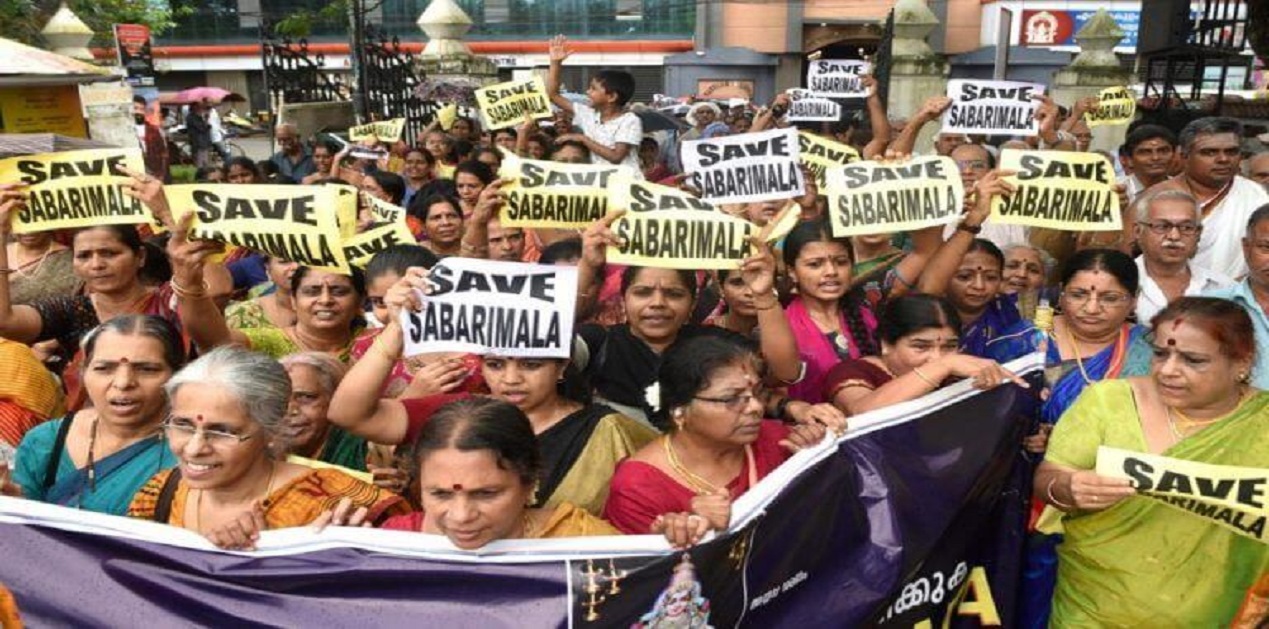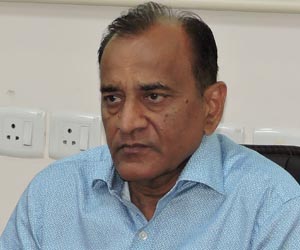All eyes are on the pronouncement of the nine-judge Bench of the Supreme Court on the Sabarimala issue. The matter is to be heard soon and it is likely that the court will engage itself with the case in a manner that the dispute ends at the earliest. The twist is that the apex court, instead of considering the review petition filed against its earlier order of granting entry to women of all age groups in the Sabarimala temple in Kerala, will rule on the seven major issues which a five-judge Bench had earlier referred to the larger Bench. This is significant because it offers the court a chance to settle once and for all the larger issues that have arisen out of the case, and not confine itself to the mere matter of entry of women into this particular shrine.
Thus, when the Chief Justice of India said that the nine-member Bench would be “only hearing the seven questions referred to a larger Bench by the five-judge Bench”, it became apparent that the learned Justices were aware of the necessity of settling the ‘faith versus rights’ issue across the board once and for all. Since this conflict pertains to other religions as well, it is expected that the apex court’s order, while dealing with the Sabarimala issue, will set a precedent for similar contentions relating to other faiths too. Each of the seven key issues is important, and taken together they represent a constitutional dilemma not just before the court but also in the minds of the people.
The first of these seven is the need to determine the comparative dynamics of Articles 14, 25 and 26 of the Constitution of India — all dealing with fundamental rights. Article 14 in its essence says that the “state shall not deny to any person equality before the law or the equal protection of the laws within the territory of India”. This provision had been invoked by the petitioners who demanded that women of all age groups be allowed into the Sabarimala shrine, since restrictions on whatever grounds impinged on their fundamental right assured under this Article. The petitioners had also sought to exercise their right to worship under Article 25. In its 2018 verdict, which was challenged through a review plea, a five-judge Bench had by a majority of 4:1 upheld those rights and ordered that women of all age groups be allowed into the shrine. Incidentally, those opposing the unrestricted right of women to enter the temple, had also quoted Article 25, saying that since it provided citizens the right to “profess, practice and propagate religion”, the tradition of not allowing women in the age group 10-50 into that particular temple was part of religious practice. Petitioners against the unrestricted entry of women also pointed out that Article 26 gave (subject to conditions) a religious denomination the right to “manage its own affairs in matters of religion”. They argued that since the devotees of the temple’s presiding deity Lord Ayyappa constituted a religious denomination, they had the right to manage religious affairs in their own way.
The second issue referred to the larger Bench is the scope of the caveat, “subject to public order, morality and health”, which is part of Article 25(1). It has been said by one side that the restriction in Sabarimala temple goes against ‘morality’. The court now has to offer clarity on this expression. The third matter is related to the second, and deals with the term ‘constitutional morality’, which the earlier five-judge Bench had used in favouring unrestricted entry. Both morality and constitutional morality are undefined terms and call for clarity.
The fourth issue before the nine-member Bench is to determine the extent to which the court can go in defining whether a particular practice is an essential part of a religion. How is the court to decide on a purely religious issue that is essentially in the domain of religious scholars and seers? And yet the nine-judge Bench has to bite the bullet, not just because this contention is at the heart of the Sabarimala dispute but could also be the key element in other similar disputes.
The fifth matter involves Article 25(2)(b), which says: “Nothing in this Article shall affect the operation of any existing law or prevent the state from making any law providing for social welfare or the throwing open of Hindu religious institutions of a public character to all classes and sections of Hindus”. Those favouring unrestricted entry of women have quoted this provision to argue that the state can enact a law to ensure that women of all age groups should be allowed entry to the Sabarimala shrine.
The sixth issue connects with the fourth. It seeks to establish whether the ‘essential religious practices’ of a religious denomination are protected under Article 26 which deals exclusively with religious matters. If that is indeed the case, then should such practices be excluded from intervention by the courts, the legislature and government orders?
The seventh and last consideration before the nine-judge Bench is of the right of individuals or institutions not forming part of devotees, to question religious practices of the devotees. This had been one of the arguments place forth by those who had favoured restricted entry of women in the Sabarimala temple.
A possible route to the verdict could be a relook at the core issue of what constitutes ‘essential religious practices’ and whether the courts can intervene in those matters that have been decided to constitute such essential religious practices. In 1954, the court had laid down that, what is considered integral to a religion ought to be determined by the doctrine of that religion and that a religious denomination or organisation has the complete right to decide on the rites and ceremonies of its religion. The verdict delivered by a seven-judge Bench, which established the ‘test’ for essential religious practices, came in the case of the Commissioner, Hindu Religious endowments, Madras versus Sri Lakshmindar Tirtha Swamiyar of Sri Shirur Mutt.
Meanwhile, as the apex court gets to work on the Sabarimala matter, it would be worthwhile to recall the dissenting judgement of Justice Indu Malhotra in the September 2018 verdict which by a majority verdict allowed women of all age groups entry into the Sabarimala shrine. Justice Malhotra had (she was lone dissenter in the five-member Bench) had recorded the following essentially: One, that the petitioners were not devotees and thus were not directly affected by the restrictions on entry. Allowing such petitioners in religious matters could open the floodgates for similar interventions by all and sundry. Two, since the Constitution allows freedom of religious practices, the restricted entry of women does not violate Article 25. Three, judicial review of religious practices should not be done since courts could not impose its rationality or morality over forms of worship, which are matters of faith.
These and the other issues now referred to the larger Bench, look for closure.
(The paper is the author’s individual scholastic articulation. The author certifies that the article/paper is original in content, unpublished and it has not been submitted for publication/web upload elsewhere, and that the facts and figures quoted are duly referenced, as needed, and are believed to be correct). (The paper does not necessarily represent the organisational stance... More >>
Image Source: https://www.clearias.com/up/Save-Sabarimala.jpg










Post new comment